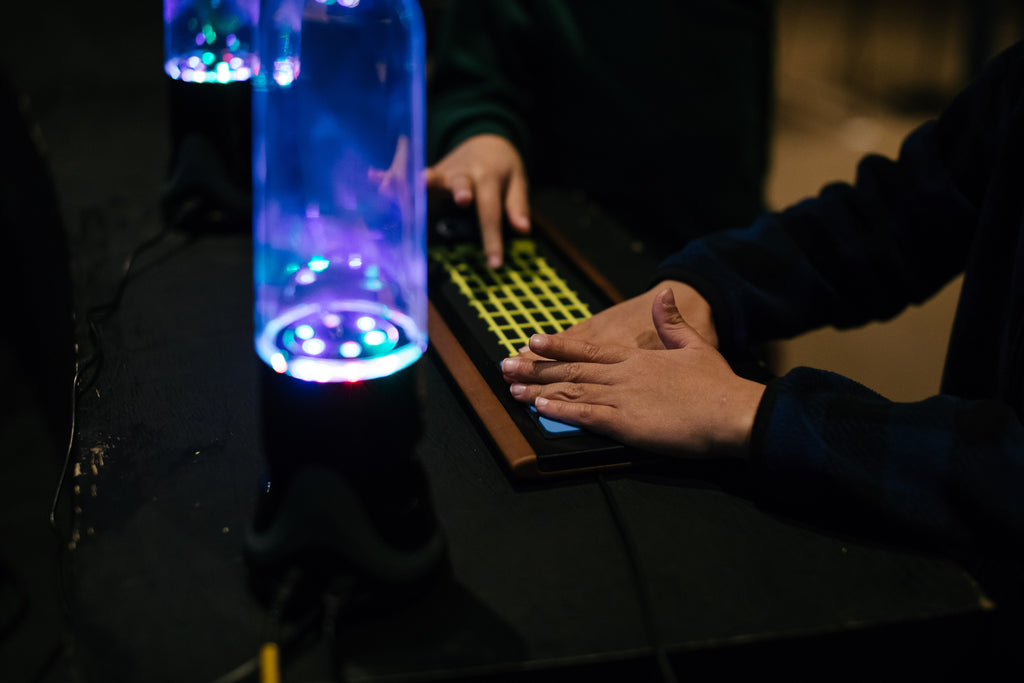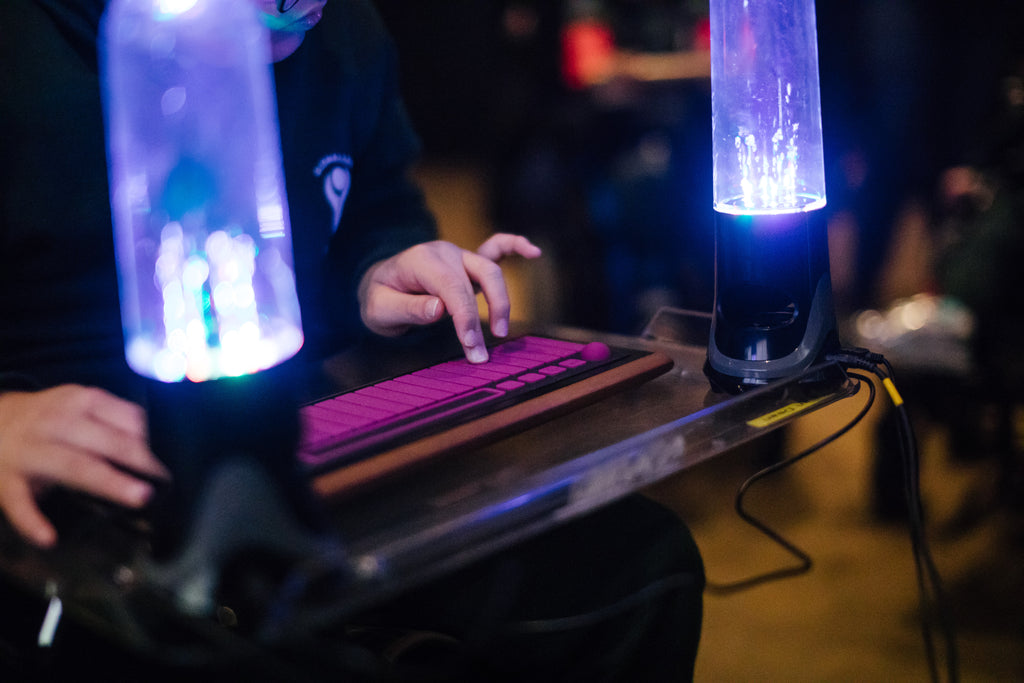Tanya McKenna and Megan Spragg are music therapists in Melbourne, Australia. They ran a music therapy program for disabled and autistic children at Arts Centre Melbourne, using Joué as a tool to improve their young patients’ motor and social skills through music creation. The result: everyone loved using Joué!
How did you first hear about Joué and include it into your music therapy program?
Tanya McKenna : I first heard about it from our music technology specialist as a means to adapt innovative technology into our program at Arts Centre Melbourne. He noted that the Joué was “State of the art, customisable, fun, colourful, powerful, user-friendly, simply INCREDIBLE”, so I was pretty keen to purchase one for our program.
“Many children with disabilities have difficulty being able to create music that is rewarding. We wanted to use the Joué to motivate them to create music that is enjoyable to listen to.” Tany McKenna

©Arts Centre Melbourne
What did you intend to achieve by using Joué with disabled children, and would you say you reached those objectives, in spite of certain technical difficulties?
T. MK. :Many children with disabilities have difficulty being able to create music that is rewarding and, to put it simply, musical. We wanted to use the Joué to motivate and engage them to create music that is enjoyable to listen to, with high sound quality. We had identified that kids were motivated by colours, good quality sounds, visual feedback and interesting textures, but that the software and technology needed to be user-friendly and quick to set up and modify during the sessions. Paired with good quality sounds through Ableton Live, the Joué was very appealing to the children.
Megan Spragg :We were trying to develop a bank of instruments that could be used by children with a range of disabilities to create their own music as independently as possible. Despite the technical difficulties for some of the children, it always did seem that they were able to make sound/music for themselves. The sounds they could hear gave them confidence to do more and a joy at being able to create something.
“Because Joué’s modules are recognizable as a fret board, keyboard or drum pad, it doesn’t feel too unknown to many people.” Megan Spragg
How did Joué compare to other modules and instruments you might have used before in music therapy?
T. MK. :In comparison to other technology we were previously using in the program, the Joué is very small, light and beautifully designed. And when paired with the water fountain speakers we used, the combination of the colourful modules with the visual speakers proved to be very motivating for students. We also found that the fretboard module paired with a drum pad module provided a very clear way for students to play in pairs.
M. S. :It’s easy to use once set up, it’s lightweight and quite durable, all of which is good, though it's a little tricky to move around because of the cord. The different modules are really useful, particularly for working with groups of children. Because its modules are recognizable as a fret board, keyboard or drum pad, it doesn’t feel too unknown to many people.
“Traditional acoustic instruments don’t always provide feedback for small movements; with Joué, the musical result can be hugely rewarding for these children.” Tanya McKenna

©Arts Centre Melbourne
In what ways does music therapy help disabled children, and what are the benefits of exposing them to digital instruments such as Joué?
T. MK. :Music therapy can develop children’s social and communication skills. Children are often highly motivated by music and music therapy can provide them with ways to express themselves and connect with others. It can also assist with the development of motor skills. Parents and teachers often reported that music therapy was highly beneficial for their child/student and they observed positive outcomes such as improved attention, listening and waiting skills, communication skills and developing their ability to walk. Often a huge amount effort is required for these children to reach out and play, and traditional acoustic instruments don’t always provide feedback for small movements; with digital instruments such as the Joué, the musical result can be hugely rewarding: with one small touch they can hear a drum, an orchestra, or a backing track of various styles of music.
M. S. :I think one of the benefits of exposing children with disabilities to digital instruments is that for children it is very normal to use digital devices in an everyday way. Giving them access to digital instruments enables them to create or listen to music just like their peers do, which boosts confidence, creates good self-esteem and reduces anxiety, fear and stress.
What do you tell fellow music therapists about using Joué with children with disabilities?
T. MK. : I have told colleagues about how the Joué allows children to create high quality sounds and how engaging the instrument is, thanks to its colourful and tactile design. I have also spoken about how easy to use it is, and how with different layers you can use backing tracks and then have children play along with them. I also think the Joué is not just appropriate for children: it would be great for use with adults as well. Its professional appearance can appeal to all ages – all the teachers and parents in our program also enjoyed having a play!
M. S. : I tell colleagues about the fact it’s easily accessed by many, with a wide variety of sounds and the ability to load backing tracks which can be activated with one button. It’s very successful in developing the ability to choose and remember favorite sounds. It does require a certain amount of strength in order to be able to produce a sound, but having to work a little to get a sound can also be motivating for some clients who then succeed.
Interview by Patrick Haour
